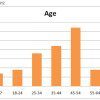As our post yesterday indicated, we are not the only online outlet looking towards the next Google Penguin update. Recently, Search Engine Land published some great information concerning the next Google Penguin update and suggestions on how to best prepare for it.
 Google Penguin Update: Brief History
Google Penguin Update: Brief History
The initial Penguin release in April of 2012 caught many in the SEO industry completely off guard. The first Google Penguin update successful targeted those website with a large number of “unnatural” backlinks. This change decimated many established websites with a long history of ranking at the top of search results.
Especially with the recent warning from Google web spam ninja Matt Cutts, SEO professionals are moving to ensure they are better prepared this time around.
Simon Penson Offers Advice for Dealing with the Next Google Penguin Update
Check out some excerpts from Simon Penson’s advice for being prepared for the next Google Penguin update:
“We also know that months of manual resubmissions and disavows have helped the Silicon Valley giant collect an unprecedented amount of data about the “bad neighborhoods” of links that had powered rankings until very recently, for thousands of high profile sites….All the signs therefore point towards something much more intelligent and all encompassing.
The question is how can you profile your links and understand the probability of being impacted as a result when Penguin hits within the next few weeks or months?
Simon Penson on The Link Graph – Bad Neighborhoods
Google knows a lot about what bad links look like now. They know where a lot of them live and they also understand their DNA. And once they start looking it becomes pretty easy to spot the links muddying the waters.
Google assigns weight or authority to links using its own PageRank currency, but like any currency it is limited and that means that we all have to work hard to earn it from sites that have, over time, built up enough to go around.
This means that almost all sites that use “manipulative” authority to rank higher will be getting it from an area or areas of the link graph associated with other sites doing the same. PageRank isn’t limitless.
These “bad neighborhoods” can be “extracted” by Google, analyzed and dumped relatively easily. They won’t disappear, but Google will devalue them and remove them from the PageRank picture, rendering them useless.
On Link Velocity
Another area of interest at present is the rate at which sites acquire links. In recent months there definitely has been a noticeable change in how new links are being treated. While this is very much theory my view is that Google have become very good now at spotting link velocity “spikes” and anything out of the ordinary is immediately devalued.
Whether this is indefinitely or limited by time (in the same way “sandbox” works) I am not sure but there are definite correlations between sites that earn links consistently and good ranking increases. Those that earn lots quickly do not get the same relative effect.
And it would be relatively straightforward to move into the Penguin model, if it isn’t there already.
On Link Trust
The “trust” of a link is also something of interest to Google. Quality is one thing (how much juice the link carries), but trust is entirely another thing. How is trust measured? In simple terms it is about good and bad neighborhoods again.
In my view Google uses its Hilltop algorithm, which identifies so-called “expert documents” (websites) across the web, which are seen as shining beacons of trust and delight! The closer your site is to those documents the better the neighborhood. It’s a little like living on the “right” road.
If your link profile contains a good proportion of links from trusted sites then that will act as a “shield” from future updates and allow some slack for other links that are less trustworthy.
On Social Signals
Many SEO pros believe that social signals will play a more significant role in the next iteration of Penguin.
While social authority, as it is becoming known, makes a lot of sense in some markets, it also has limitations. Many verticals see little to no social interaction and without big pots of social data a system that qualifies link quality by the number of social shares across site or piece of content can’t work effectively.
In principle it is possible though that social sharing and other signals may well be used in a small way to qualify link quality.
On Anchor Text
Most SEO professionals will point to anchor text as the key telltale metric when it comes to identifying spammy link profiles. The first Penguin rollout would undoubtedly have used this data to begin drilling down into link quality.
I asked a few prominent SEO professionals their opinions on what the key indicator of spam was in researching this post and almost all pointed to anchor text.
“When I look for spam the first place I look is around exact match anchor text from websites with a DA (domain authority) of 30 or less,” said Distilled’s John Doherty. “That’s where most of it is hiding.”
The key is the relationship between branded and non-branded anchor text. Any natural profile would be heavily led by branded (e.g., www.example.com/xxx.com) and “white noise” anchors (e.g., “click here”, “website”, etc).
The allowable percentage is tightening. A recent study by Portent found that the percentage of “allowable” spammy links has been reducing for months now, standing at around 80 percent pre-Penguin and 50 percent by the end of last year. The same is true of exact match anchor text ratios.
Expect this to tighten even more as Google’s understanding of what natural “looks like” improves.
Relevancy
One area that will certainly be under the microscope as Google looks to improve its semantic understanding is relevancy. As it builds up a picture of relevant associations that data can be used to assign more weight to relevant links. Penguin will certainly be targeting links with no relevance in future.
Simon Penson’s Takeaways
No one is in a position to be able to accurately predict what the next coming will look like but what we can be certain of is that Google will turn the knife a little more making link building in its former sense a more risky tactic than ever. As numerous posts have pointed out in recent months it is now about earning those links by contributing and adding value via content.
If I was asked what my money was on, I would say we will see a tightening of what is an allowable level of spam still further, some attempt to begin measuring link authority by the neighborhood it comes from and any associated social signals that come with it. The rate at which links are earned too will come under more scrutiny and that means you should think about:
- Understanding your link profile in much great detail. Tools and data from companies such as Majestic, Ahrefs, CognitiveSEO, and others will become more necessary to mitigate risk.
- Where you link comes from not just what level of apparent “quality” it has. Link trust is now a key metric.
- Increasing the use of brand and “white noise” anchor text to remove obvious exact and phrase match anchor text problems.
- Looking for sites that receive a lot of social sharing relative to your niche and build those relationships.
- Running back link checks on the site you get links from to ensure their equity isn’t coming from bad neighborhoods as that could pass to you.
Google Penguin Update: A Case Study
Glenn Gabe from Search Engine Land provided case study examples on “Racing Penguin: How to Attack Unnatural Links Before Penguin Hits”. His article deals with many of the same issues Penson tackles. Most important is his section on lessons learned and key insights on the Google Penguin update:
“What started as quick email about web of trust (WOT) turned into a race against the mighty Penguin. There are definitely some important lessons from this case study that we wanted to share.
Let’s face it, this very well could be happening to thousands of unsuspecting companies across the world, so we hope these learnings can help some of them avoid disaster:
- Understand the Scope of Work: Fully understand the scope of work when you hire a third party. Ensure you know all the projects they will be tackling, and make sure you get the list in writing. Also, make sure you receive reporting that explains what has been completed. If you do, then you can easily check the work to make sure all is ok.
- Who Will Be Doing the Work?: Understand who is actually completing the work, and get it in writing. Don’t fall victim to companies outsourcing work to unknown consultants around the world. I’ve seen this scenario many times during my Penguin research, and it doesn’t end well.
- Set Up Google Webmaster Tools: For the love of SEO, set up your Google Webmaster Tools account and verify your website(s) today! Seriously, there are so many important pieces of data you gain access to via your account. And you can verify your site in just minutes. Do it now. Ditto for Bing Webmaster Tools.
- Analyze Your Inbound Links: Understand your link profile now. Don’t wait for a Penguin update to review your inbound links. Have a link analysis completed so you can understand which sites are linking to you, and how they are linking to you. You never know what you are going to find.
- Take Swift Action: If you find a problem, take action, move fast, and be thorough. Don’t just talk about the problem, attack it like you’re on a mission. And be as thorough as you can, both with link removals, and with your reconsideration request. And don’t be afraid to use the disavow tool as a last resort. That’s what it’s there for.
Approaching the Finish Line
Racing Penguin, like most Penguin work, isn’t fun. Again, most companies react to Penguin (as they see a massive drop in traffic after a Penguin update). It’s not often you find yourself racing Penguin to the finish line (or update line). But that’s exactly what we had to do.
My client’s site isn’t in the clear yet. We need another Penguin update to hit before we can truly feel comfortable.
In the meantime, my client is working on developing a solid content plan and social strategy. It’s something he’s needed to do for a while, and this situation has kicked that work into full gear. And that’s a good thing.”































